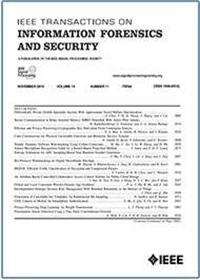Semantic Entropy Can Simultaneously Benefit Transmission Efficiency and Channel Security of Wireless Semantic Communications
IF 6.3
1区 计算机科学
Q1 COMPUTER SCIENCE, THEORY & METHODS
IEEE Transactions on Information Forensics and Security
Pub Date : 2025-01-27
DOI:10.1109/TIFS.2025.3534562
引用次数: 0
Abstract
Recently proliferated deep learning-based semantic communications (DLSC) focus on how transmitted symbols efficiently convey a desired meaning to the destination. However, the sensitivity of neural models and the openness of wireless channels cause the DLSC system to be extremely fragile to various malicious attacks. This inspires us to ask a question: “Can we further exploit the advantages of transmission efficiency in wireless semantic communications while also alleviating its security disadvantages?”. Keeping this in mind, we propose SemEntropy, a novel method that answers the above question by exploring the semantics of data for both adaptive transmission and physical layer encryption. Specifically, we first introduce semantic entropy, which indicates the expectation of various semantic scores regarding the transmission goal of the DLSC. Equipped with such semantic entropy, we can dynamically assign informative semantics to Orthogonal Frequency Division Multiplexing (OFDM) subcarriers with better channel conditions in a fine-grained manner. We also use the entropy to guide semantic key generation to safeguard communications over open wireless channels. By doing so, both transmission efficiency and channel security can be simultaneously improved. Extensive experiments over various benchmarks show the effectiveness of the proposed SemEntropy. We discuss the reason why our proposed method benefits secure transmission of DLSC, and also give some interesting findings, e.g., SemEntropy can keep the semantic accuracy remain 95% with 60% less transmission.求助全文
约1分钟内获得全文
求助全文
来源期刊

IEEE Transactions on Information Forensics and Security
工程技术-工程:电子与电气
CiteScore
14.40
自引率
7.40%
发文量
234
审稿时长
6.5 months
期刊介绍:
The IEEE Transactions on Information Forensics and Security covers the sciences, technologies, and applications relating to information forensics, information security, biometrics, surveillance and systems applications that incorporate these features
 求助内容:
求助内容: 应助结果提醒方式:
应助结果提醒方式:


